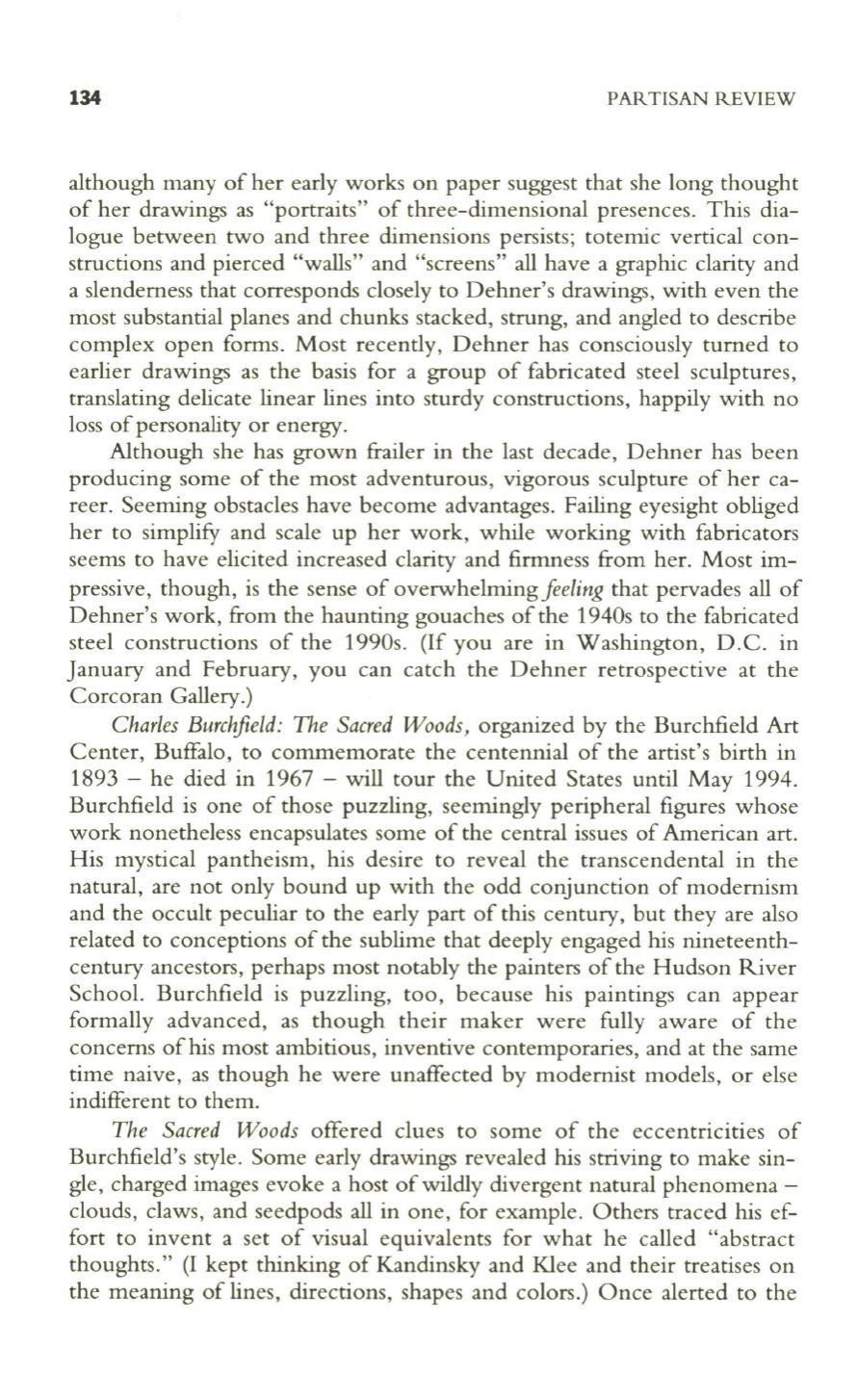
134
PARTISAN REVIEW
although many of her early works on paper suggest that she long thought
of her drawings as "portraits" of three-dimensional presences . This dia–
logue between two and three dimensions persists; totemic vertical con–
structions and pierced "walls" and "screens" all have a graphic clarity and
a slenderness that corresponds closely to Dehner's drawings, with even the
most substantial planes and chunks stacked, strung, and angled to describe
complex open forms. Most recently, Dehner has consciously turned to
earlier drawings as the basis for a group of fabricated steel sculptures,
translating delicate linear lines into sturdy constructions, happily with no
loss of personality or energy.
Although she has grown frailer in the last decade, Dehner has been
producing some of the most adventurous, vigorous sculpture of her ca–
reer. Seeming obstacles have become advantages. Failing eyesight obliged
her to simplify and scale up her work, while working with fabricators
seems to have elicited increased clarity and firmness from her. Most im–
pressive, though, is the sense of overwhelming
feeling
that pervades all of
Dehner's work, from the haunting gouaches of the 1940s to the fabricated
steel constructions of the 1990s. (If you are in Washington, D.C. in
January and February, you can catch the Dehner retrospective at the
Corcoran Gallery.)
Charles Burchfield: The Sacred Woods,
organized by the Burchfield Art
Center, Buffalo, to commemorate the centennial of the artist's birth in
1893 - he died in 1967 - will tour the United States until May 1994.
Burchfield is one of those puzzling, seemingly peripheral figures whose
work nonetheless encapsulates some of the central issues of American art.
His mystical pantheism, his desire to reveal the transcendental in the
natural, are not only bound up with the odd conjunction of modernism
and the occult peculiar to the early part of this century, but they are also
related to conceptions of the sublime that deeply engaged his nineteenth–
century ancestors, perhaps most notably the painters of the Hudson River
School. Burchfield is puzzling, too, because his paintings can appear
formally advanced, as though their maker were fully aware of the
concerns ofhis most ambitious, inventive contemporaries, and at the same
time naive, as though he were unaffected by modernist models, or else
indifferent to them.
The Sacred Woods
offered clues to some of the eccentricities of
Burchfield's style. Some early drawings revealed his striving to make sin–
gle, charged images evoke a host of wildly divergent natural phenomena -
clouds, claws, and seedpods all in one, for example. Others traced his ef–
fort to invent a set of visual equivalents for what he called "abstract
thoughts." (I kept thinking of Kandinsky and Klee and their treatises on
the meaning of lines, directions, shapes and colors .) Once alerted to the


